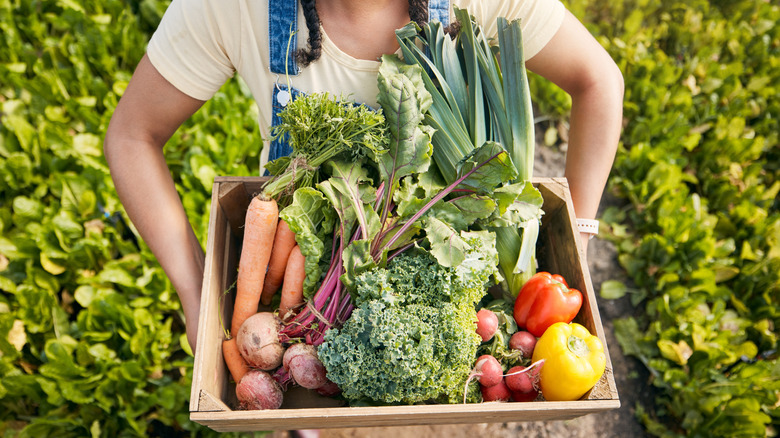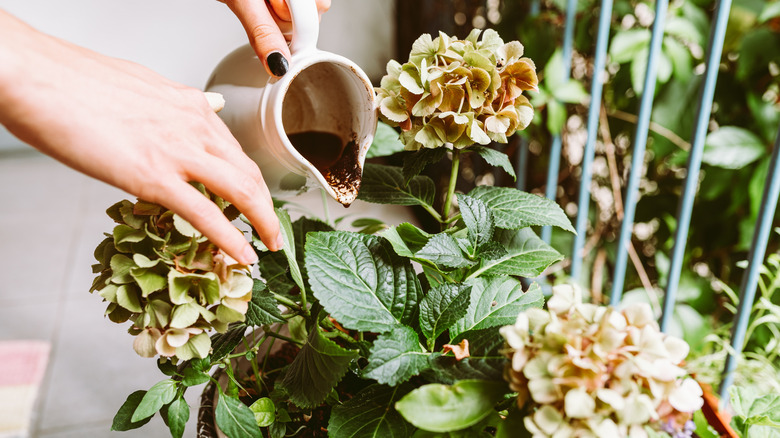Keep Pests Out Of Your Garden With The Help Of This Morning Staple
There's nothing worse than putting in the time and effort to build your perfect garden, all for some unwanted vermin to come along and ruin everything. While you may have tricks up your sleeves for growing strong and healthy plants, and even more tools on how to harvest your produce properly, controlling unruly pests can be a hassle. Luckily, there's one powerful and all-natural repellent that you likely already have at home (especially if you like a fresh-smelling fridge): coffee grounds.
It's important to note that we're referring to already used coffee grounds here, not fresh ones (and not freshly brewed coffee, either). In the world of coffee, the different forms directly correlate to their pH level (and other properties). Used coffee grounds are acidic, but not as acidic as fresh or brewed coffee. They're the perfect in-between, and what you'll need when using coffee in your garden.
When it comes to garden pests, the smell of coffee itself is enough to keep many pests and insects away (of course, we can't relate since we're obsessed with the glorious smell of coffee). Simply sprinkle it around your garden to keep them at bay. Also, keep in mind that it's believed that the caffeine is what does the trick, so make sure you aren't using decaf grounds.
Other ways to use coffee in your garden
While it's great to use to ward off unwanted pests, there's a multitude of other ways that coffee can benefit your garden. For example, coffee grounds are a known fertilizer, helping to deliver nutrients to your garden to boost growth. If you're growing plants that prefer a more acidic soil — like tomatoes, blueberries, peppers, carrots, fennel, or beets — coffee grounds are an easy way to help those plants thrive. When using coffee for fertilizer, you can either sprinkle it directly on the soil, mix some into your topsoil, or make a liquid fertilizer by combining coffee grounds and water. If using dried grounds, just make sure the layer of coffee grounds isn't thicker than a half-inch.
You can also use coffee grounds to color certain flowers, like hydrangeas — sprinkle on some grounds, and you'll have brightly blue flowers in no time, perfect for a breakfast table bouquet. And finally, adding used coffee grounds to your compost is a quick and easy way to reap its benefits, as it helps food decompose faster. When using it in compost, just make sure that the amount of coffee added doesn't exceed more than 25% of the total materials. This can cause the overall compost to become too acidic.


